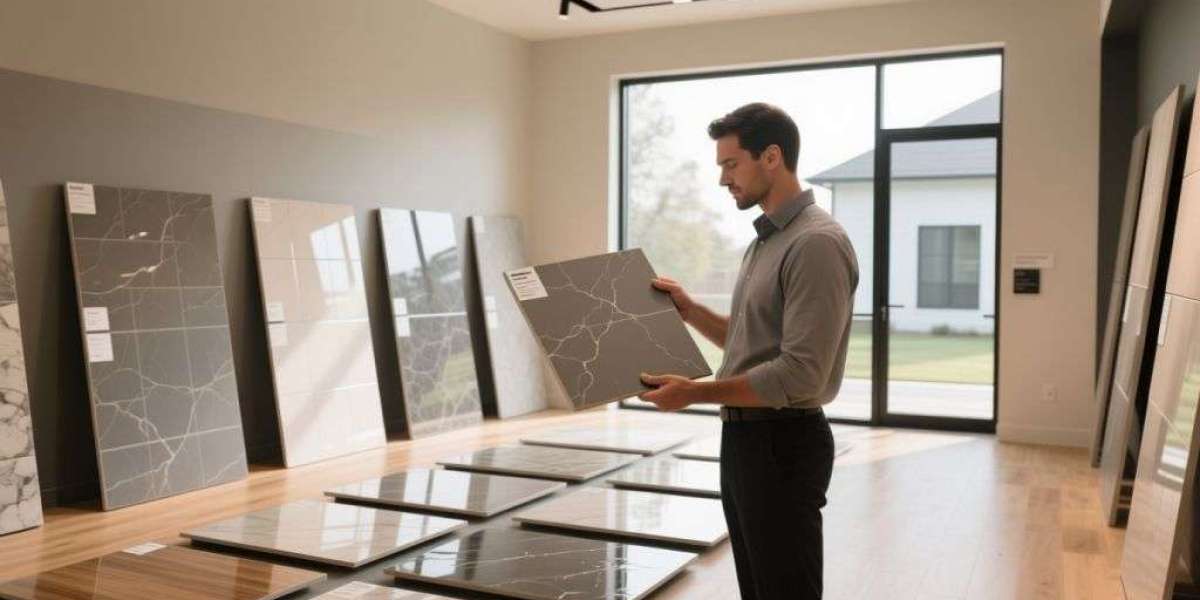Choosing tile is a dance between art and science. While your heart may be drawn to a particular pattern or color, a truly successful selection is made with the mind. The science behind that beauty is encoded in a set of standardized ratings—a practical language that reveals a tile's character and capabilities. Understanding this language is the key to transforming a potentially stressful decision into a confident, worry-free choice. This guide will walk you through the essential ratings, providing you with the practical knowledge to select tiles that will deliver both stunning aesthetics and unwavering performance for years to come.
The Performance Promise: Why Ratings are Your Reality Check
Tile ratings are the unbiased results of rigorous laboratory tests. They are a tile's performance resume, detailing its qualifications for the job you're hiring it to do. Bypassing these ratings in favor of looks alone is a gamble with high stakes. Will the tile in your entryway hide dirt or show every footprint? Will your bathroom floor become dangerously slick? Will your new patio crumble after its first frost? Ratings provide the definitive answers, allowing you to trade uncertainty for confidence and make a selection grounded in reality.
The Moisture Test: Water Absorption as Your First Filter
A tile's relationship with water is its most defining trait. The water absorption rate, a percentage, measures its porosity and immediately narrows down its field of application.
Porcelain (Impervious): The undisputed leader for demanding environments. With an absorption rate below 0.5%, it is effectively waterproof. This makes it highly resistant to stains, frost, and bacteria, qualifying it for kitchens, bathrooms, and all outdoor installations.
Glazed Ceramic (Vitreous/Semi-Vitreous): These tiles have a more absorbent body shielded by a protective glaze. They are a cost-effective and beautiful solution for interior walls and dry-area floors. It's crucial to remember that the glaze is a protective shell; if it is compromised, the tile body beneath is vulnerable.
A simple inquiry about the absorption class at your local ceramic tile shop can prevent a world of future problems, especially for areas prone to moisture.
The Longevity Gauge: PEI and the Science of Wear
How will your floor look after a decade of family life? The PEI (Porcelain Enamel Institute) rating provides a reliable forecast. It classifies the abrasion resistance of the tile's surface glaze, directly correlating to its ability to withstand the scuffs and scratches of daily foot traffic. This is precisely the kind of practical advice a seasoned professional at a ceramic tile shop can offer.
Use this straightforward PEI guide:
PEI 0: For walls only. Not designed for foot traffic.
PEI I: For very light traffic on residential bathroom walls.
PEI II: For light traffic on bathroom and bedroom floors.
PEI III: For normal traffic throughout most of the home (living rooms, hallways, kitchens).
PEI IV: For heavy traffic in entryways and light commercial settings.
PEI V: For intense, constant traffic in commercial and public spaces.
Selecting a tile with an insufficient PEI rating for its location is a direct compromise on its long-term appearance and value.
The Scratch Defense: Mohs Hardness in Everyday Life
While PEI measures surface wear from abrasion, the Mohs Hardness Scale evaluates a tile's resistance to sharp, point-contact scratches. On a scale from 1 (softest) to 10 (hardest), a higher rating means the surface is more difficult to mar. A tile with a high Mohs rating will stand up to the challenges of an active household, from pet claws and children's toys to the occasional dragged kitchen chair.
The Safety Standard: A Practical Approach to Slip Resistance
Creating a safe home environment is a primary responsibility. Slip resistance ratings offer a scientific way to evaluate a tile's traction, which is non-negotiable in wet areas.
Coefficient of Friction (COF): This measures the grip a surface provides. For level interior wet spaces, a wet DCOF (Dynamic Coefficient of Friction) of 0.42 is a common reference point, but a value of 0.6 or higher offers a greater safety margin.
R-Rating (R9 to R13): This European system is becoming increasingly common. R9 provides a basic level of slip resistance, while R13 is reserved for the most hazardous wet locations.
A glossy tile might be appealing for its easy-clean surface, but it can become treacherously slippery when wet. For bathrooms, laundry rooms, and outdoor steps, always prioritize a textured tile with a certified high slip rating.
Weathering the Storm: The Importance of Frost Resistance
For any outdoor tile installation in a region that experiences freezing temperatures, frost resistance is a mandatory feature. When water is absorbed into a porous tile and freezes, it expands with enough force to shatter the tile from within. A frost-resistant tile is defined by its extremely low water absorption, which prevents water from infiltrating its structure. When planning an exterior project, always confirm with your ceramic tile shop in Singapore that the tiles are explicitly rated for freeze-thaw conditions.
The Strength Factor: Why Breaking Strength Matters
This rating indicates the amount of concentrated force a tile can endure before it breaks. It is a critical specification for floors that will support heavy, stationary loads like kitchen islands, large appliances, or commercial equipment. Large-format tiles are particularly dependent on a high breaking strength and a perfectly prepared, rigid subfloor to prevent cracking.
The Personality Parameter: Managing Shade Variation (V1-V4)
Tiles that emulate natural materials are intentionally designed with color and pattern variations. The V-scale helps you set your expectations and choose the final character of your space.
V0 (Uniform): Minimal to no variation. Ideal for a consistent, modern aesthetic.
V1 (Slight): Subtle tonal shifts that add a hint of natural character.
V2 (Moderate): A noticeable but balanced mix of light and dark tones.
V3 (High): Pronounced contrast and dramatic veining for a bold, custom look.
V4 (Substantial): Each tile is distinctly unique, creating an artistic, one-of-a-kind installation.
To ensure the final result aligns with your vision, always request to see multiple tiles from different boxes laid out together before you complete your purchase.
The Execution Element: Installation, Adhesive, and Grout
The best-rated tile in the world is only as good as its installation. The substrate must be stable, flat, and clean. The correct adhesive must be selected for the tile type and the specific environment. Furthermore, your choice of grout is critical. Cementitious grouts are common but require sealing to resist stains and moisture. Epoxy grouts, while more difficult to install, offer a nearly impermeable, stain-proof finish that is ideal for wet areas and kitchens.
Your Game Plan for the Showroom
Arm yourself with knowledge before you shop. Create a simple brief detailing the room's function, expected traffic, and exposure to moisture. When you're at the showroom, be an active participant. Ask direct questions about PEI, absorption, and slip resistance. Handle the samples, test their texture, and see how they look under your own lighting. A reputable supplier will respect your diligence and provide the information you need.
By embracing the practical art of tile selection, you empower yourself to make a choice that is both beautiful and brilliant. You choose a material that is engineered for its purpose, guaranteeing a result that is safe, durable, and a lasting source of satisfaction.














